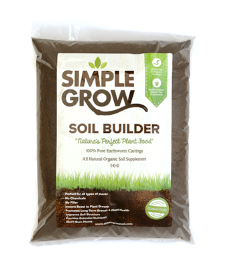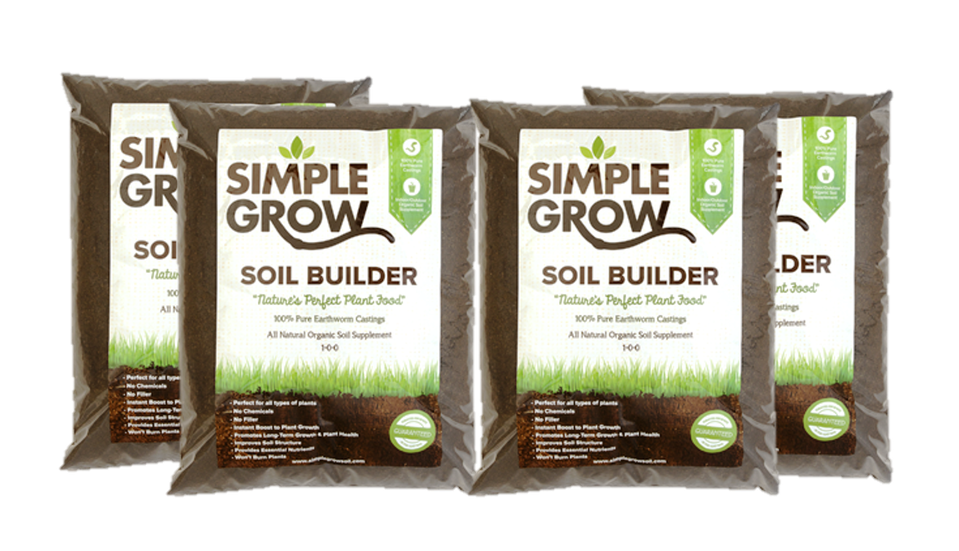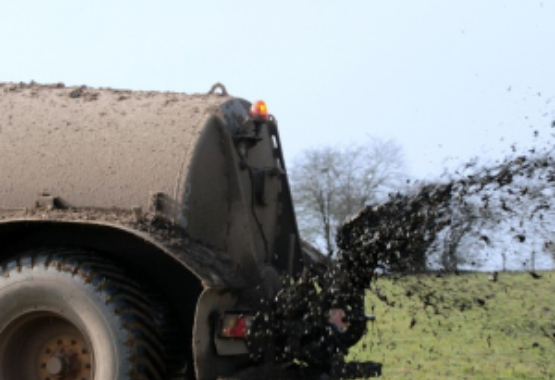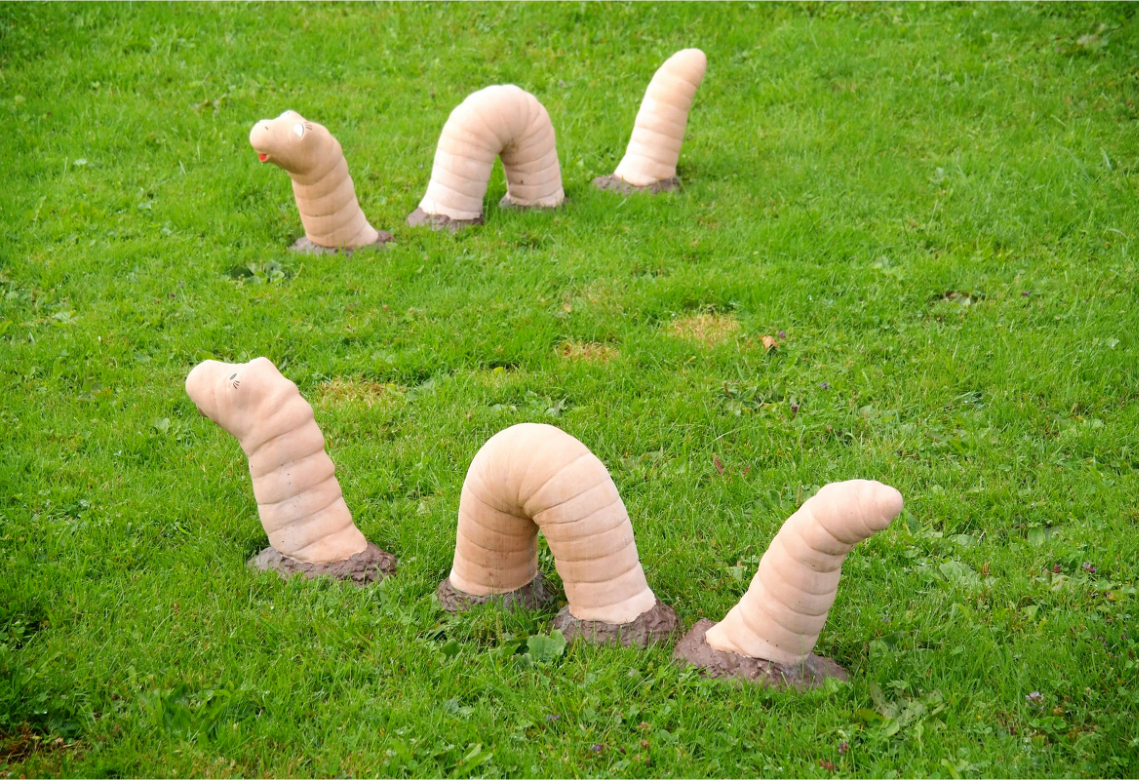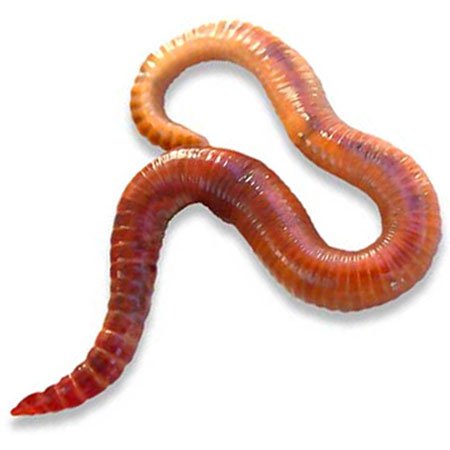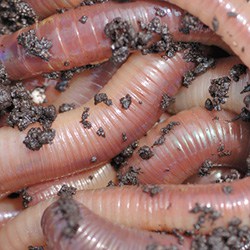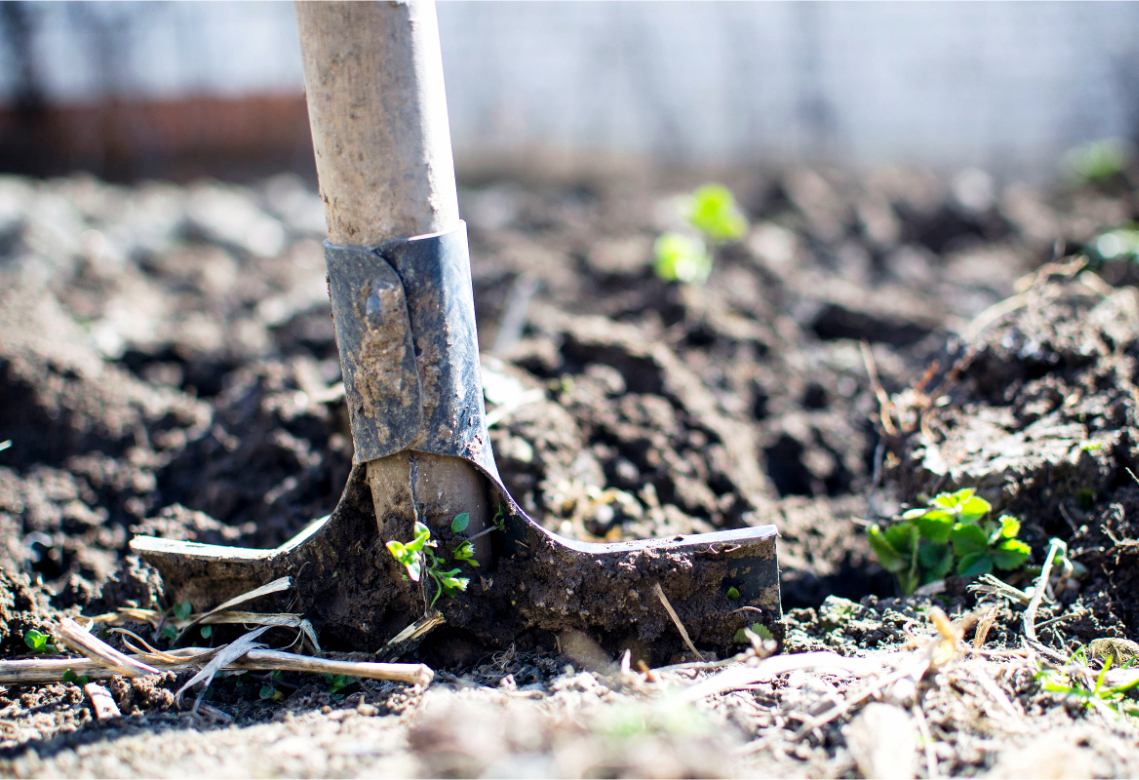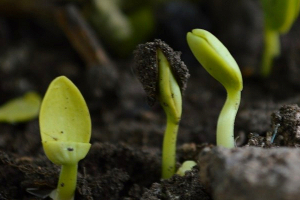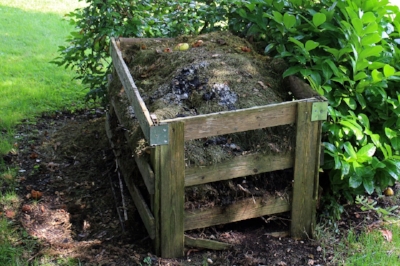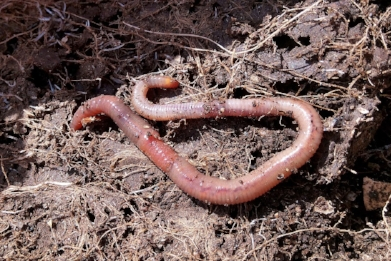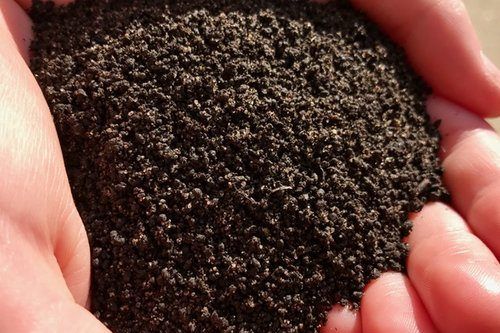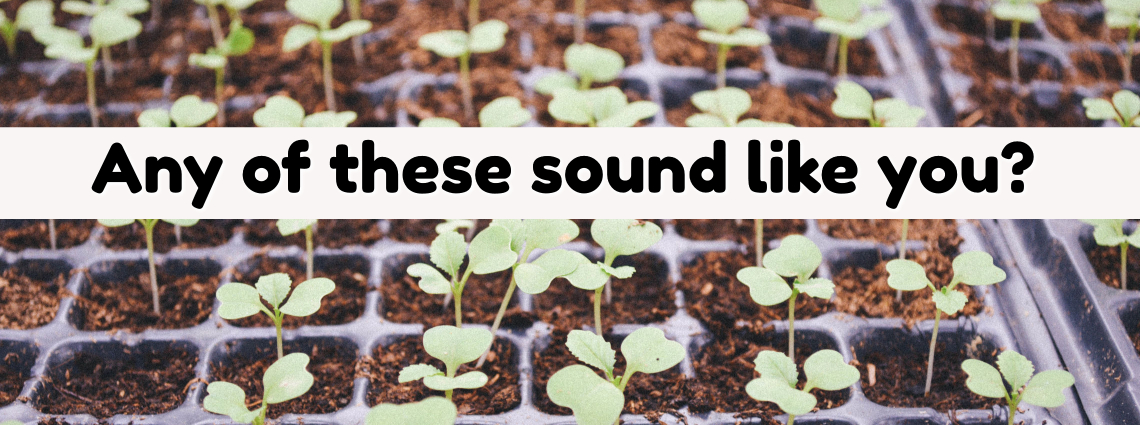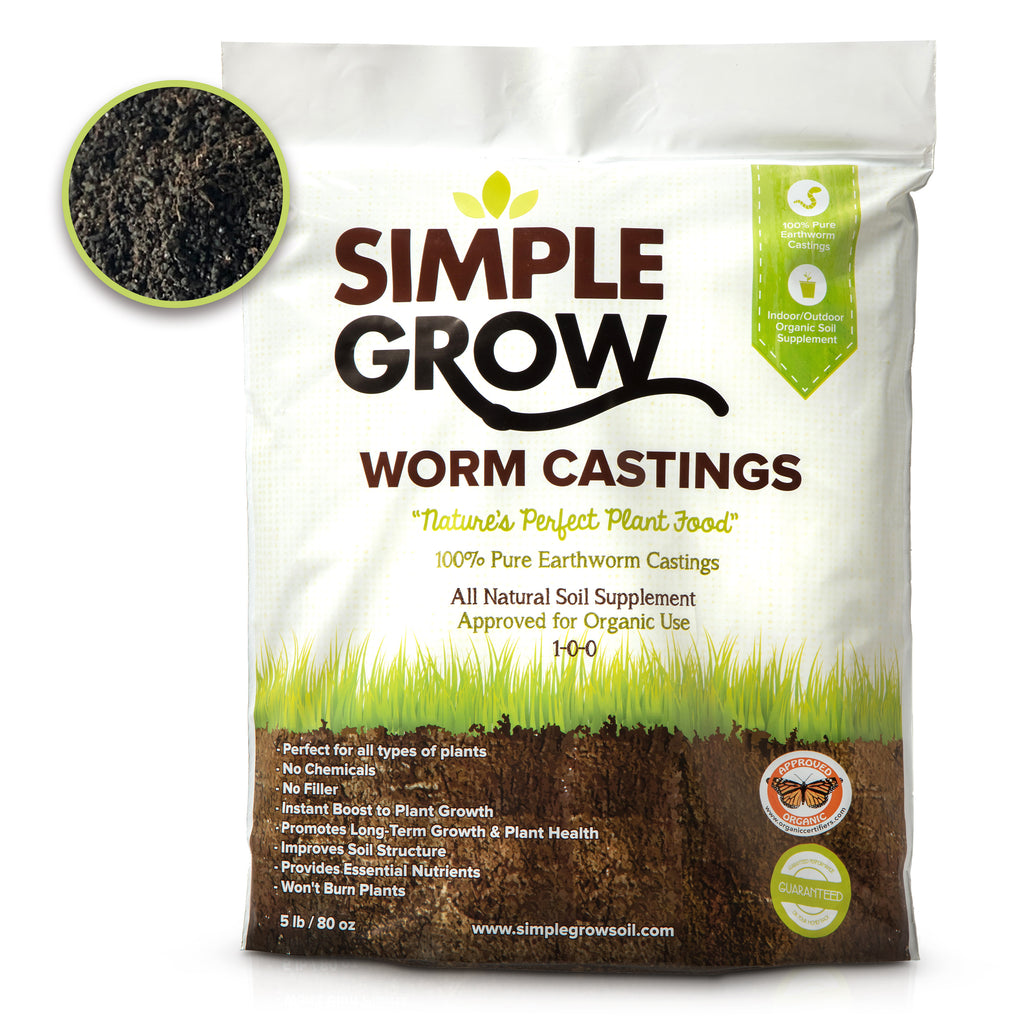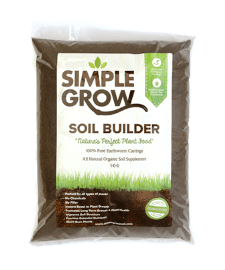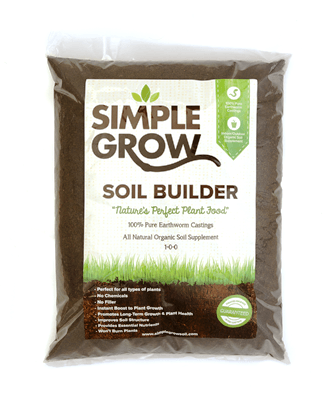How to Use Worm Castings & Earthworm Soil Supplements
Worm castings are the gardener's secret weapon and nature's most perfect plant food wrapped into one. They're a natural soil supplement and create rich, dark humus. Many users, researchers, and studies consider it the most potent natural fertilizer in the world.
Worm castings are the manure created by earthworms (sometimes referred to as vermiculture) and have become more and more popular with gardeners and farmers in recent years. They organically provide a number of benefits such as plant growth, soil aeration, moisture retention, natural pest resistance, and protection from disease.
If plants could talk, there's a good chance they'd be shouting for a handful, bag, or maybe even a truckload of more worm castings!
What Exactly Is Earthworm Poop Anyway?
Although you've got the basic idea that it's poop from an earthworm, there's a lot more to it than that...
Unlike other types of manure, earthworm casting is almost perfectly designed to promote all kinds of healthy plants to their fullest potential - particularly observed in an increase in seed germination.
One of their most interesting features is their level of microbial activity. Worm castings have a unique combination of helpful enzymes, humic acid, mucus, and positive bacterial activity. Do you know how humans benefit from “good bacteria” in their digestive systems? The positive bacteria from the earthworm digestive system make their way into the castings and help stimulate healthy growth for plants.

Nutrient-Rich Plant Food
When worms produce castings, organic material is present throughout, making it an ideal supplement for barren soil. Have some tough gardening soil that could use some help?
Many of the nutrients that plants need to thrive can be found in large quantities within earthworm castings. Nutrients such as magnesium, calcium, potassium, and phosphorus are practically bursting out of this stuff. You'll also find nitrates in a very potent form within the castings.
While other types of fertilizer or soil supplement can claim these nutrients, they can't claim that they are immediately available to the roots of the plant. Most of the time when you grow plants, soil that's full of fertilizer can burn the roots and permanently damage the plant.
With castings, however, all the healthy nutrients that the plant needs are water-soluble and can be absorbed right away. You also don't have to worry about putting too much casting material into the soil, because it will never burn the roots of your plants or flowers.
In addition to the core nutrients that the plant needs to grow, you'll also find copper, zinc, iron, cobalt, borax, manganese, nitrogen, and carbon. That provides a lot of versatility in nutrients for all different kinds of plants and many different kinds of soil.
It's kind of like worm castings fill in whatever nutritional gaps with your organic garden or crops, and makes it so that you can grow amazing plants with natural germination... no matter what!
Looking for more ways to use worm castings? Keep reading to find out more.
Curious How To Use Casting Supplements?
Need Some For Your Garden?
Not quite ready? Keep reading to see how worm castings can help your plants...
Ways to Apply Castings
Depending on what you’re trying to accomplish, there are different ways to apply worm castings.
Mix in with the soil
- If you’re starting from scratch, one of the best ways to apply worm castings is to mix it in with the soil. This works great if you’re planting in a raised garden bed or any size or color of planter where you’re filling the whole thing with soil anyway. For this, using a ratio of 1 part castings to 2 to 4 parts soil works best.
Broadcast
- This method involves using a dry spreader to spread the castings out on top of the area where you’re planting. This can be done by hand, with a hand spreader, or a large dry fertilizer spreader. This works well for yards, gardens, and fields.
Liquid Tea Soil Supplement
- Worm castings tea is a liquid mixture that you can make with water, molasses and worm castings. Just to be clear, you wouldn’t want to drink this tea!
You can see what’s involved in making worm castings tea in the video.
Once you’ve made the tea, you simply spray it on the ground, plants, or both. This allows you to spread the castings a lot farther and it can also form a protective barrier on the exterior of your plants. This discourages plant diseases and pests from getting on the plants.
We offer an easy-to-use tea kit that gives you everything you need to create the perfect liquid supplement. Within 24 hours, you’ll have worm castings tea that you can spray on any plant and get great results.
Not All Supplements Are Created Equal...
Many different products are called worm castings, but that doesn't mean all of them are the same. Depending on the process used to create them, the purity and potency can vary. What exactly is it that makes one type of worm casting better than another?
While most worms are similar, there are some key differences between them when it comes to the castings that they are used to produce. Red wiggler worms are often used to create compost. This is also referred to as vermicompost.
The drawback to this method of production is the worms often consume a lot of junk. They may be eating table scraps, trash, yard waste with pesticides on it, and anything else you can imagine.
Producers using this method often pay little attention to what they're feeding their worms. In nature, red wigglers find food on the surface of the ground and help decompose organic material. This makes them an ideal worm for composting bins, as they feed on kitchen scraps out in the open. But not the best for castings...
Nightcrawler Earthworms come in a few different varieties and prefer to live in the soil. They burrow down into the ground and prefer to eat organic matter that is found in the soil (not on top).
When producing castings with earthworms, a food source is often mixed into a bedding comprised of rich, dark soil. The earthworms move around throughout the soil, consuming the food within and leaving behind pure earthworm castings.
For most uses, earthworm castings are preferable to compost produced by red wiggler worms, or Eisenia Fetida, because of the manner in which they consume food and the habitat in which they live.
At Simple Grow, we actually use a special variety of African Nightcrawler, as they have proven to produce the highest quality casting.
Yes, worm type does matter...
Food Source Is Key To Quality Castings
Another factor that plays a role in the quality of the castings produced is the food source consumed by the worms. Even among true earthworm casting producers, there are variations in diet, that can have an impact on the end product. Typically, earthworms are put into bedding that is mixed with a food source.
The quality of the dirt plays a big part in the outcome of the worm castings. By using rich topsoil, worms are often given a better balance of nutrients and minerals from the main sources, microorganisms, and fungi, to consume. They also like to move around in certain types of soil better than others, which improves the end product.
In addition to the soil itself, any food that is added to the soil will also play a role. Some producers use a blend of grains, while others mix in compost material to provide sustenance for the worms.
The best approach (which is why we use it here at Simple Grow) is to give the worms a controlled diet of organic grains and protein, along with high-quality, screened dirt. This creates the perfect environment for worms to thrive, particularly nightcrawlers, and thereby produces a better casting in the end.
Don't Forget The Harvesting Method...
The third factor that helps determine the quality of the worm castings is the harvesting method used. Even if you put the worms in the perfect dirt and feed them a fantastic diet, you could still be left with a less-than-perfect product. The harvesting method used to collect the castings is critical.
Once it's time to harvest the castings, they have to be screened out from the contents of their container. A series of screens may be used to remove the worms, cocoons, and dirt from the product. By utilizing the proper screening system, you're left with nothing but the purest form of earthworm castings.
Some methods do not produce 100% pure earthworm casts, but instead a mixture of dirt, compost, and some casts. A premium worm casting product will be nothing but high-quality castings in the bag.
When examining a worm castings product, the purity is important so that you get the most bang for your buck. If you're purchasing worm castings, you don't want a bag that has 80% worm castings and 20% rocks and dirt. In some cases, the ratio of castings to refuse is even worse than that.
While there may not necessarily be anything wrong with having extra dirt in the castings, it reduces the amount of castings that you're getting overall. The lower the percentage of castings, the poorer quality of soil, compost, and eventually pile of castings you'll get. When you can go with a brand that is pure castings, there's no reason to settle for something less.
But How Do You Get It...
The methods for producing earthworm castings vary, depending on the producer. Here are a few different strategies that are used.
Composting Bins...You can call them "Garbage Worms"
One of the more common methods of producing worm castings is with a composting bin. With this strategy, composting materials are placed in a worm bin. The type of bin can vary, depending on the space available and level of investment. Often, large barrels are used, while others use wooden or metal rectangular bins.
Composting materials such as table scraps, coffee grounds, fruit, leaves, grass clippings, garden waste, mulch, newspaper, and other items are placed into the bin. From there, composting worms such as red wigglers are also placed into the compost pile mixture within the bin.
After a certain amount of time, the mixture is then removed from the bins and used as compost. In some cases, the worms are filtered out using screens and only the compost remains. Depending on the situation, there could be a lot of inconsistency in the final product because of the variation of the items put in initially.
That means that you might have some materials that are fully broken down and some that aren't. If the compost isn't thoroughly screened, you may also find some rocks, hard clumps of dirt, and other things that you don't really want in the final product. While vermiculture in windrows is best, bins work great for smaller spaces so you can maintain your own supply.
Non-Pure Casting Supplements
A better method of producing worm castings involves utilizing buckets or large boxes. To make castings on a smaller scale, buckets are often utilized, while larger scale operations use rectangular boxes. For this method of producing castings, real earthworms are often utilized instead of red wigglers.
Regardless of the container, the contents are filled with the bedding for the worms (the dirt) and the food source. Since worms will eat a lot of different things, this food source can vary from one operation to the next. In some cases, the food source will even vary from one batch to the next because of availability issues.
After a period of time, the worms will consume the organic matter and most of the bedding and produce large amounts of castings. At that point, the producer then takes the product and packages it up. This results in a mixture of materials that is not pure earthworm castings, although it does have them in the product. The downside of this approach is that you don't know if you're getting 80%, 50% or less in castings. The rest could just be dirt, rocks, leftover food for the worms, and worm cocoons.
Pure Inputs Make Pure Outputs
The third and best method of producing castings is similar to the previous method, but with a couple of important factors (which is why Simple Grow chooses to use Pure Worm Castings). The two key differences are in the consistency of the food source and timing, as well as the way that the castings are filtered out.
In the beginning, the earthworms are placed into containers along with the bedding and the food source. The food source is controlled and it is the same each time. This helps produce a consistent product, in which the nutrients and minerals are identical.
After a specific period of time, typically two weeks per cycle, the contents of the container are then run through a series of filters or screens. These screens remove the various components of the mixture and you're left with nothing but pure worm castings. The worms, worm cocoons and anything else are taken out. This produces the highest-quality type of castings available and gives gardeners exactly what they need, with nothing else diluting it.
I Need Help Germinating New Seeds
If your goal is to germinate seeds quickly, then worm castings can make a substantial difference. Depending on what plant you're trying to germinate, mixing some worm castings with sand may be the ideal solution. It creates an environment that is conducive to seeds sprouting.
Typically, you'll want to use a ratio of about one-fourth or one-third castings with the remainder being sand. This will allow your plants to sprout for somewhere between a few weeks and three months, before you move them to another medium.
My Soil Won't Grow Anything
In some cases, you're trying to work with truly barren, ugly soil. If your soil is lacking any kind of organic content or nutrients, mixing in some castings can make an unbelievable difference. Pour a layer of worm castings on top and then do your best to mix it in with the soil.
Put some water on the soil and let it soak in. The worm castings act as a soil amendment and help water retention, and the dirt should now avoid being packed down. In a short period of time, you'll be surprised just how rich and fertile the soil is from that point forward.
I Don't Like Chemicals... but Want My Plants to Grow Bigger
If you are actively planting, fertilizing your plants with worm castings will help tremendously. If you haven't yet planted, spread the castings all over the soil and mix them in. Then plant the seeds.
If you've already planted the plants and they're growing, you can sprinkle them around the base of the plants and dig them into the soil as much as possible. The water-soluble nutrients in the castings will be absorbed by the plants rapidly and you'll notice a difference shortly.
Nature's Perfect Plant Food
Worm castings truly are a plant “super food.” The more you learn about earthworm castings, the more you start to realize just how amazing they are. They're simple to use, produce fantastic results, and give you the most “bang for your buck.” With that being said, not all worm casting products are the same. Before you decide to try castings out for yourself, it's important to make sure you know what you're getting.
Frequently Asked Questions
-
Will adding Simple Grow to your home garden improve the soil structure?
Most definitely! Worm castings can significantly improve the soil structure of your home garden by helping differentiate the texture from regular dirt. Regardless of whether you have clay, silt, loam or sand, worm castings will help balance out what you’re missing.
One of the main things that it provides is preventing the soil from packing down. The physical particles of worm castings look like tiny, compact balls. When you squeeze it together with your hand, it won’t stick together like many types of dirt. This means that when you mix it in with the soil, it provides that same type of aeration and structure to the soil mixture overall.
In addition to helping with aeration, it also provides an assist with drainage and moisture regulation. By providing just the right amount of oxygen and water to the plants, it can really improve root growth.
-
Do people use Simple Grow to start seedlings?
Many people will start seedlings in small containers with 100% worm castings and it works great. Then when they transplant the seedlings, they’ll put them into a mixture with worm castings and other things mixed in. Just a few cups of worm castings can be used to start many seedlings in a small area.
This works so well because they provide a variety of microbes to the seeds when they’re in those pivotal early stages. One advantage that pure worm castings has over vermicomposting in this regard is that the castings are consistent and have several forms of nutrients. This differentiates it from other fertilizers and creates the perfect growth environment for the seedlings.
-
Does liquid tea work as well?
In many ways, worm tea can work just as well as pure vermicast. However, there are some situations where it’s better to have pure worm castings.
Worm tea is a liquid that’s made from brewing worm castings in water. The nice thing about it is that you get a big variety of microbes in the liquid, which can be sprayed on the soil or directly on the plant.
This is extremely beneficial for boosting plant nutrition. You can get the microbes in a high concentration liquid that can help cover the plants in the good stuff. On the downside, using worm tea doesn’t provide you with the same benefits as putting worm castings in the soil when you plant. You won’t get the benefits of aeration or moisture control by using worm tea.
You also have to reapply the worm tea every few weeks to two months for best results. The big advantage of using worm tea is that it makes the microbes go a lot farther with this method. You can spray an entire yard with a few gallons of worm tea. On our own gardens, we spray it every few weeks to keep the aphids and other bugs at bay
-
When is the best time to apply?
The good news is, there’s not really a bad time to apply worm castings. Many people apply it to their gardens, yards, trees, vegetables, shrubs and planters year round.
However, the best season to have worm castings on hand is during the spring. Many people will also use it heavily during the fall season. If you’re growing indoors, worm casting season is all the time.
-
It doesn’t seem like the N-P-K ratio is that great? Why would I use them?
That’s a valid point. However, the N-P-K isn’t the only factor when it comes to growing plants. No, worm castings aren’t the most vibrant source of nitrogen. It does have a lot of other things going for it.
The massive variety of microbes as well as trace elements will do a lot to boost plant growth. By just using a few cups of worm castings, you’ll provide your plants with everything they need to burst forth from the ground and to live a healthy life.
If you don’t believe us, just try a bag. You’ll never want to go back to your regular fertilizers again, regardless of npk.

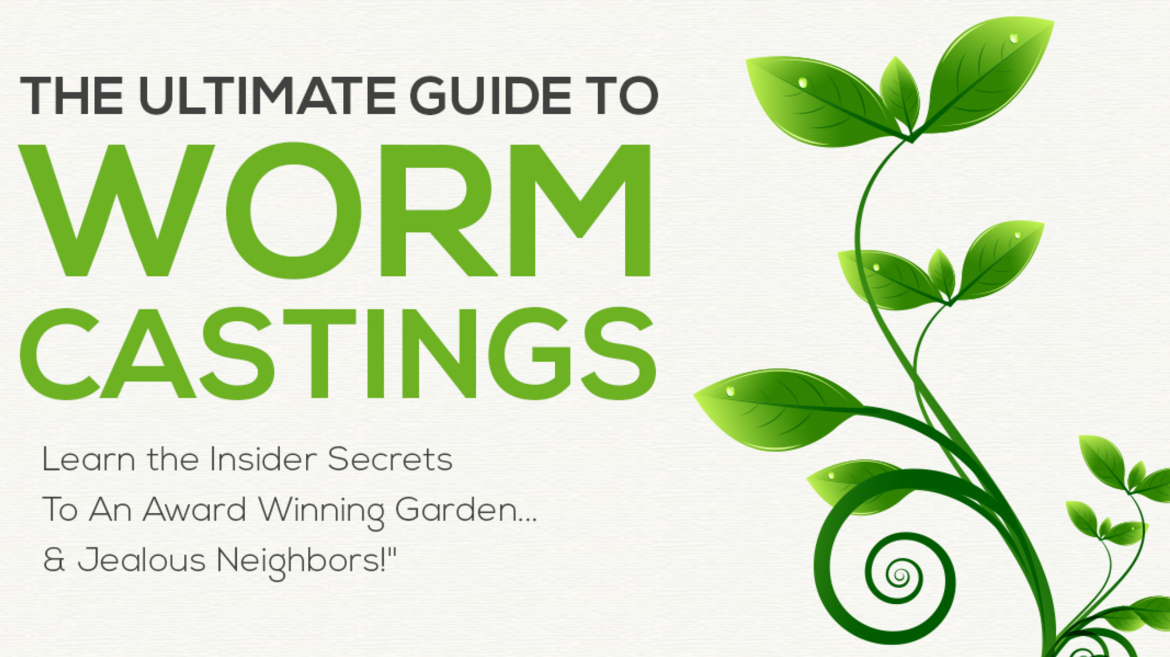
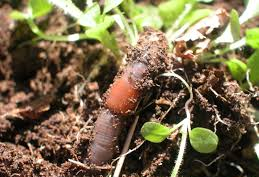
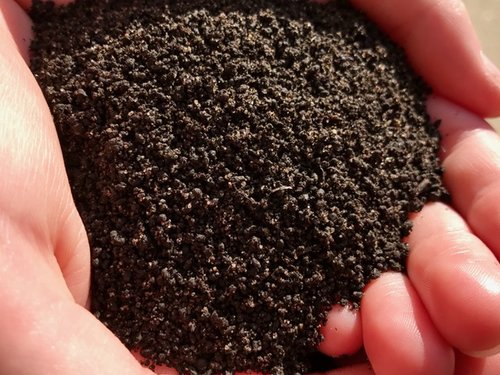
/eff997fed5654b85b743f84c9d244a54/02.jpg)
/fdd8f2666553467fadebb5f48dad12a1/8-reasons-to-use-earthworm-castings-on-your-garden.jpg)
